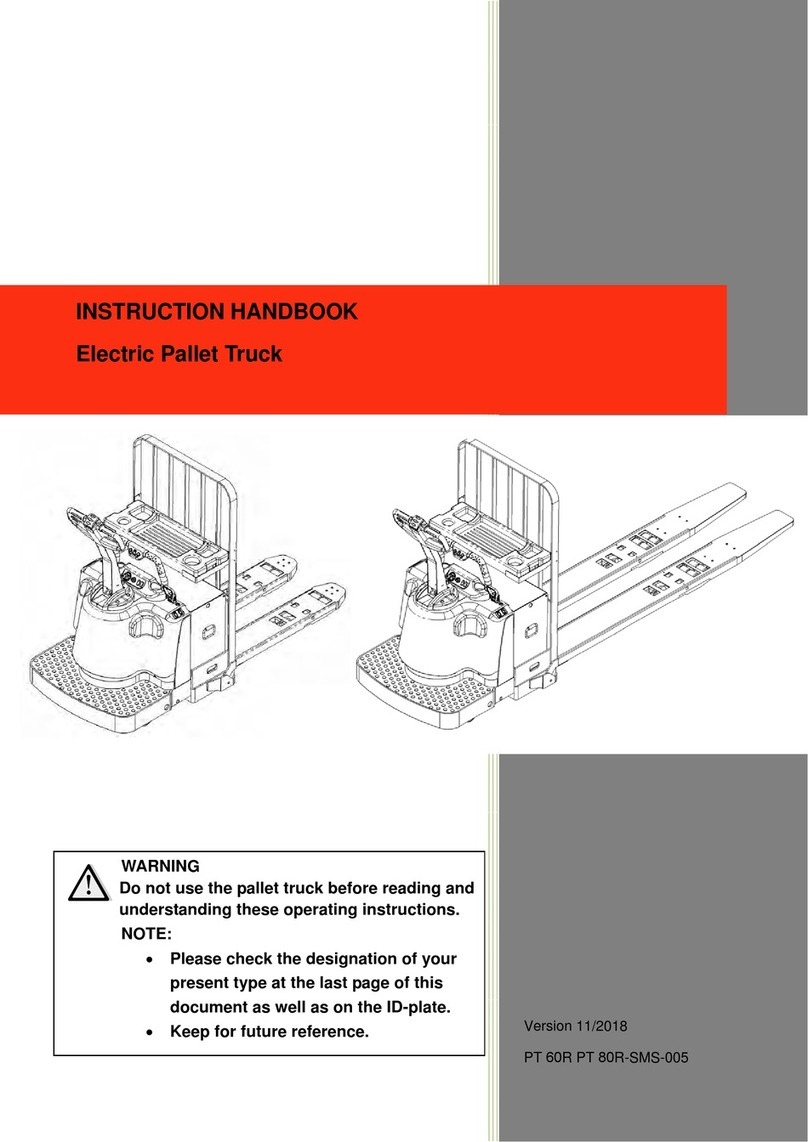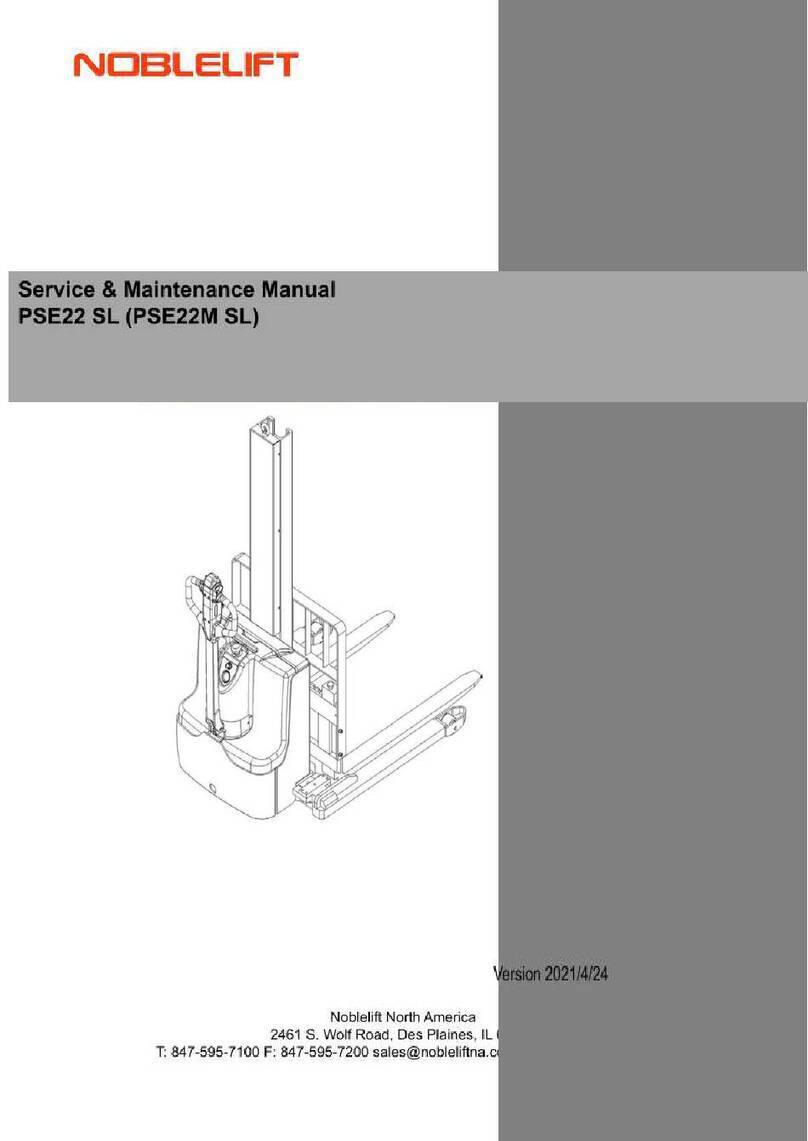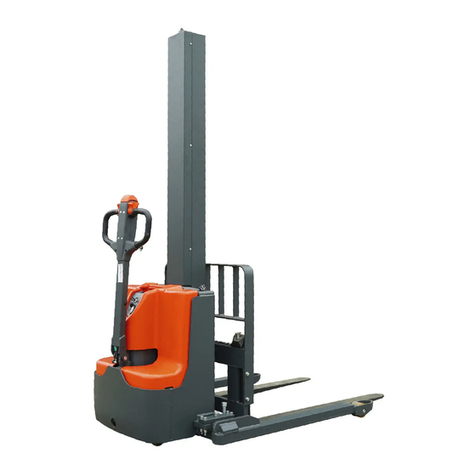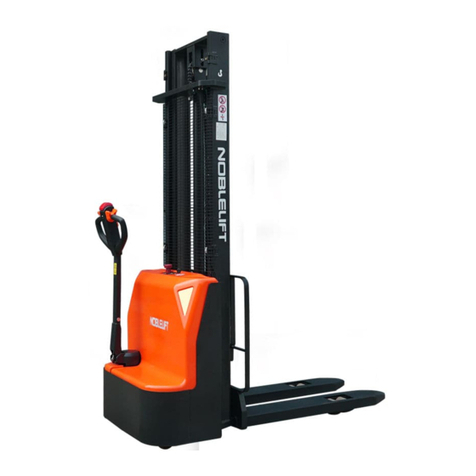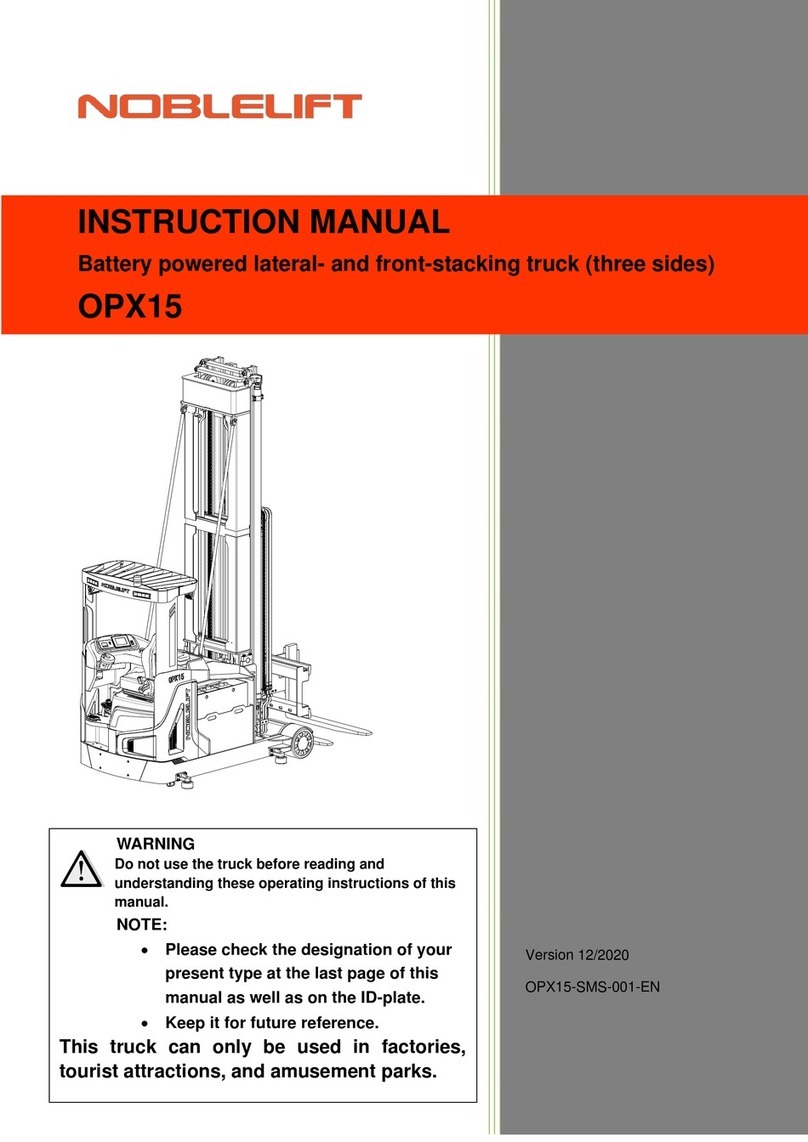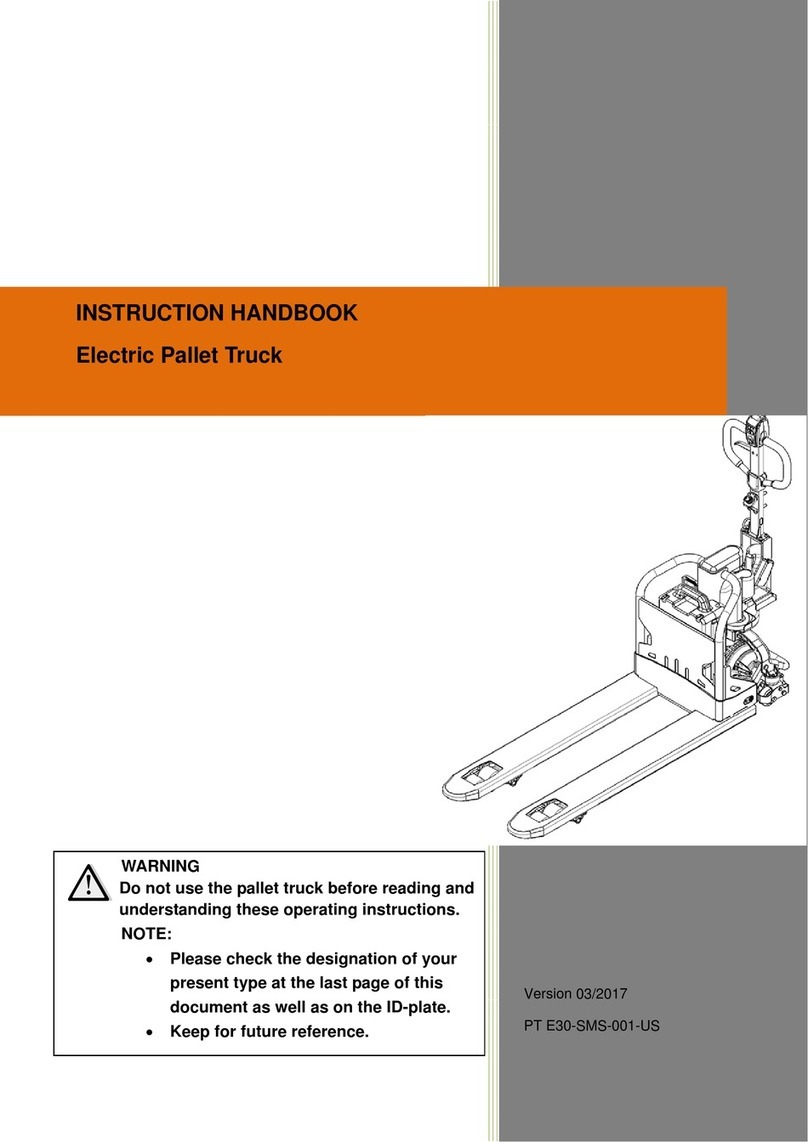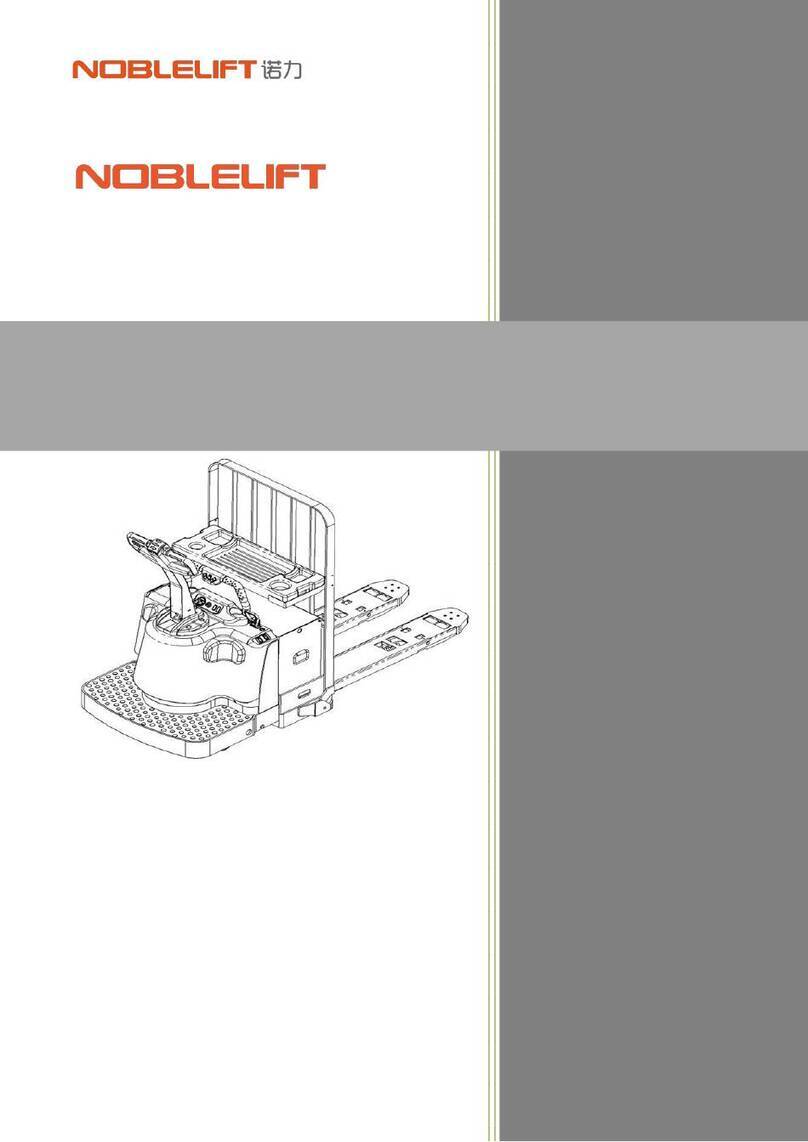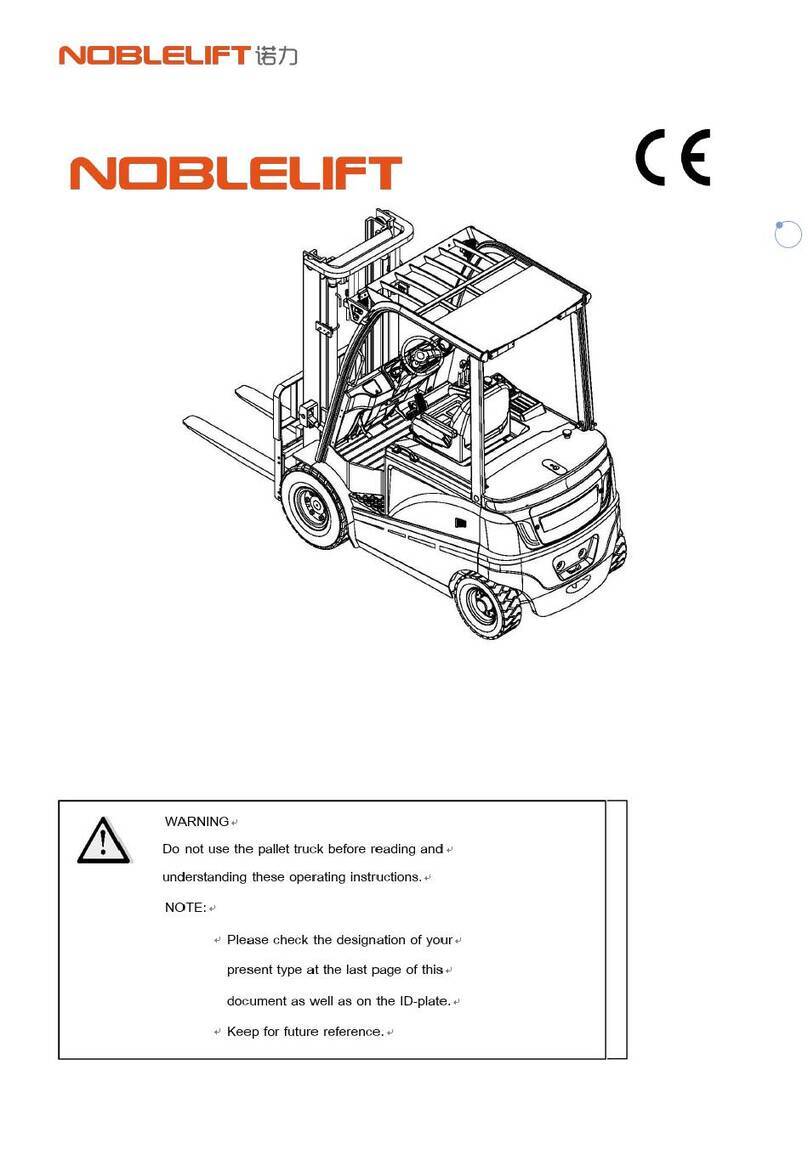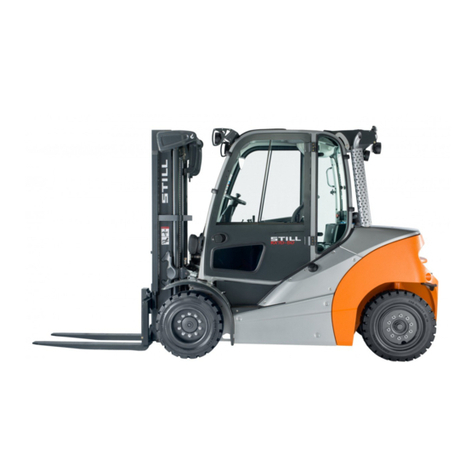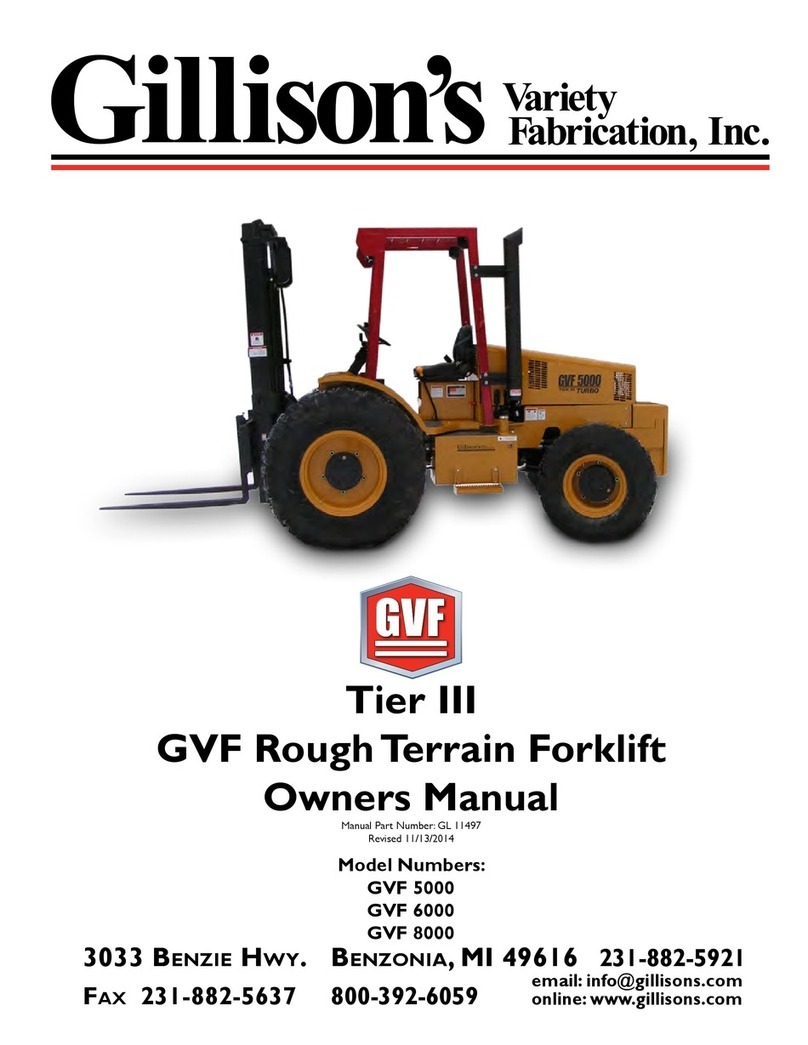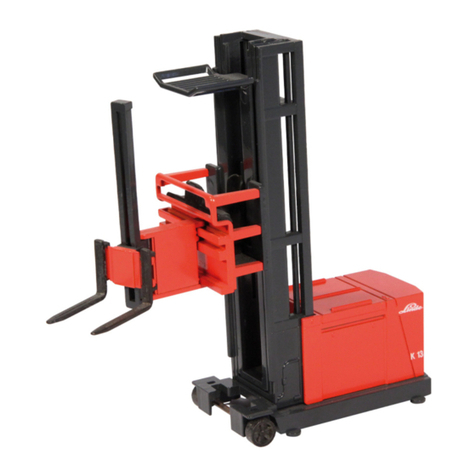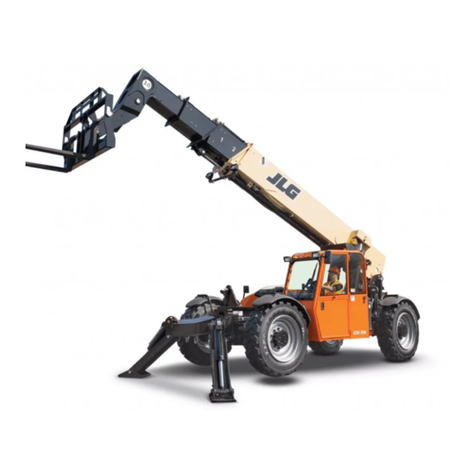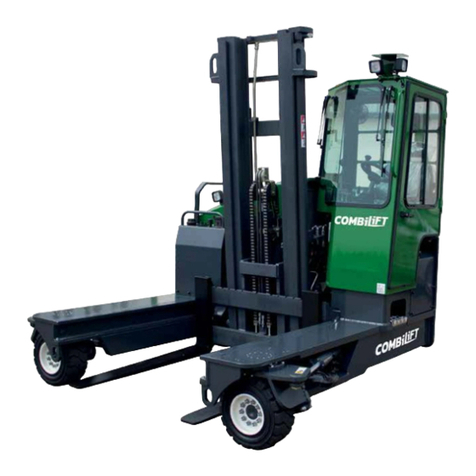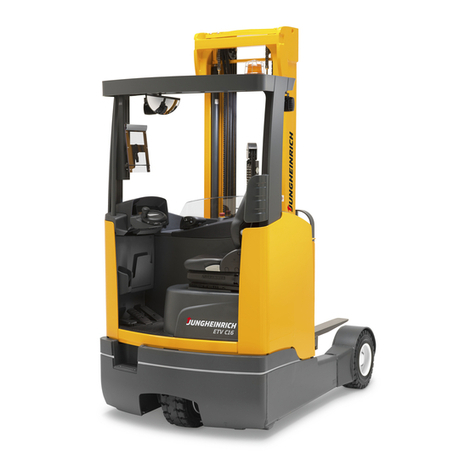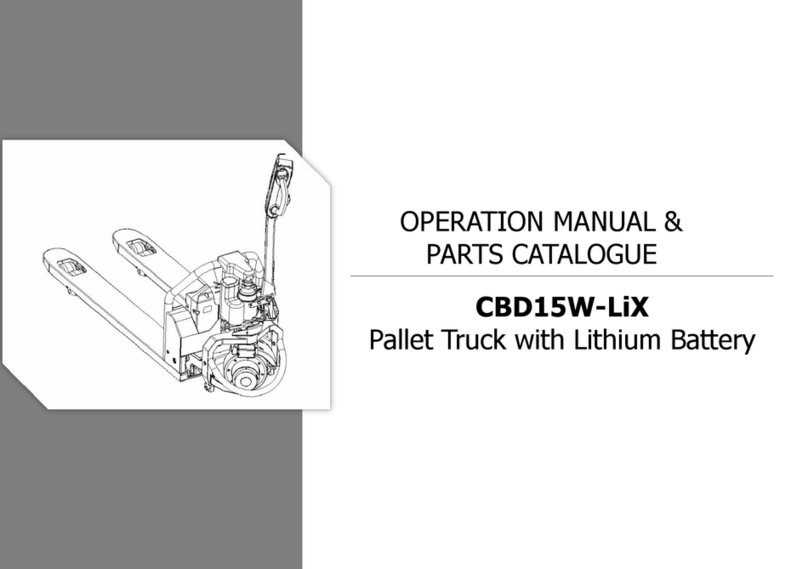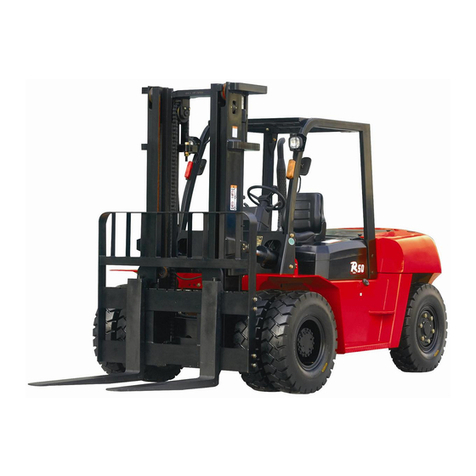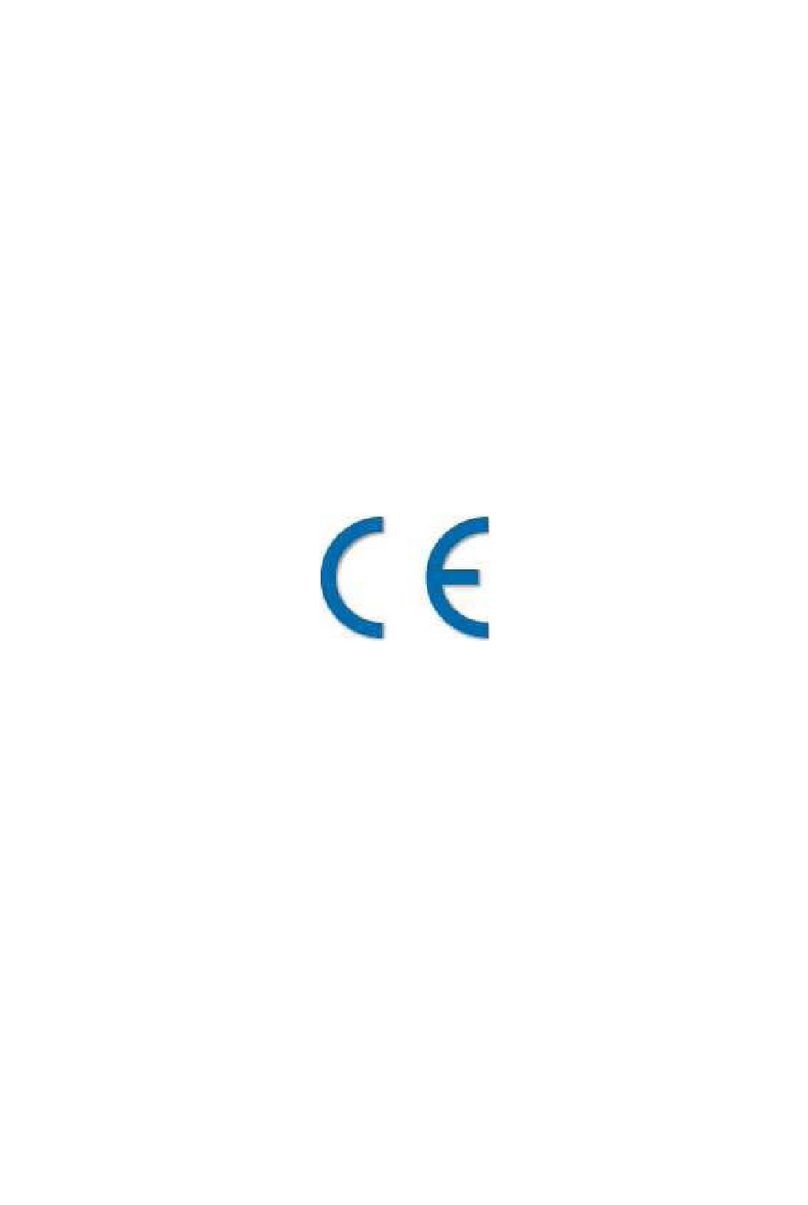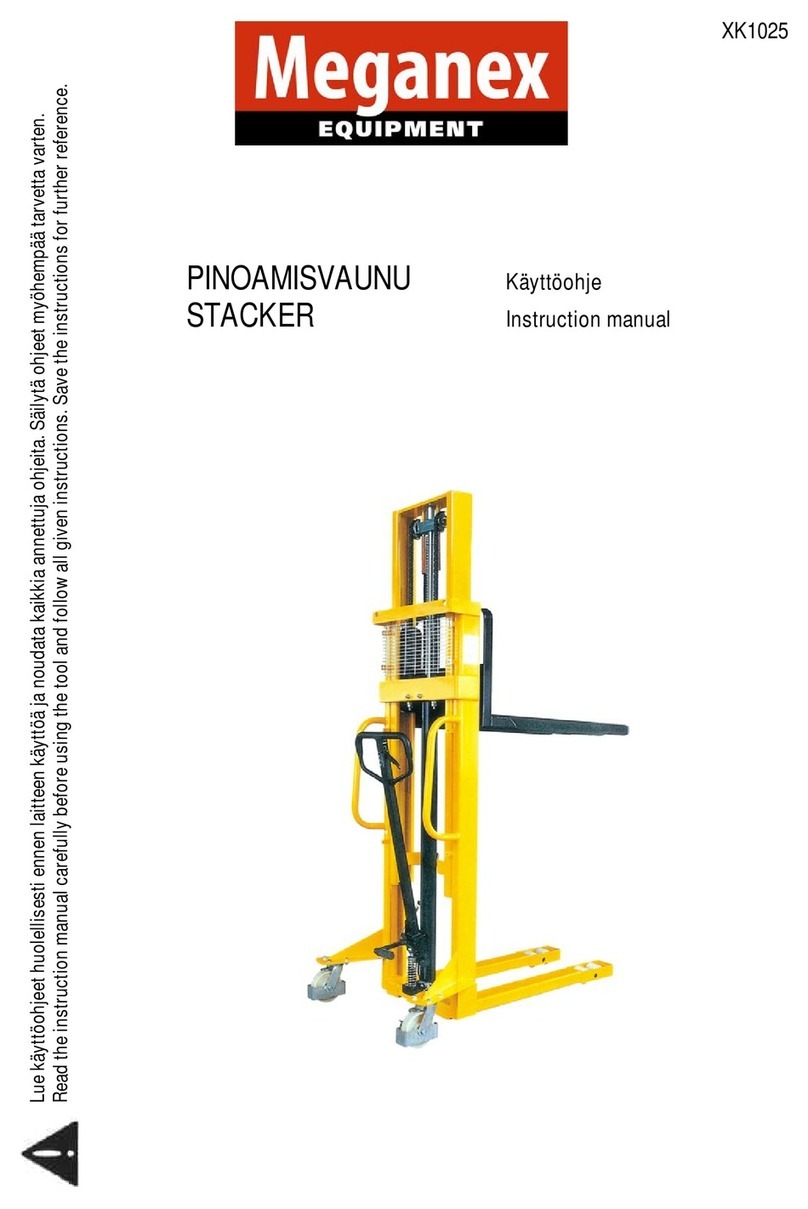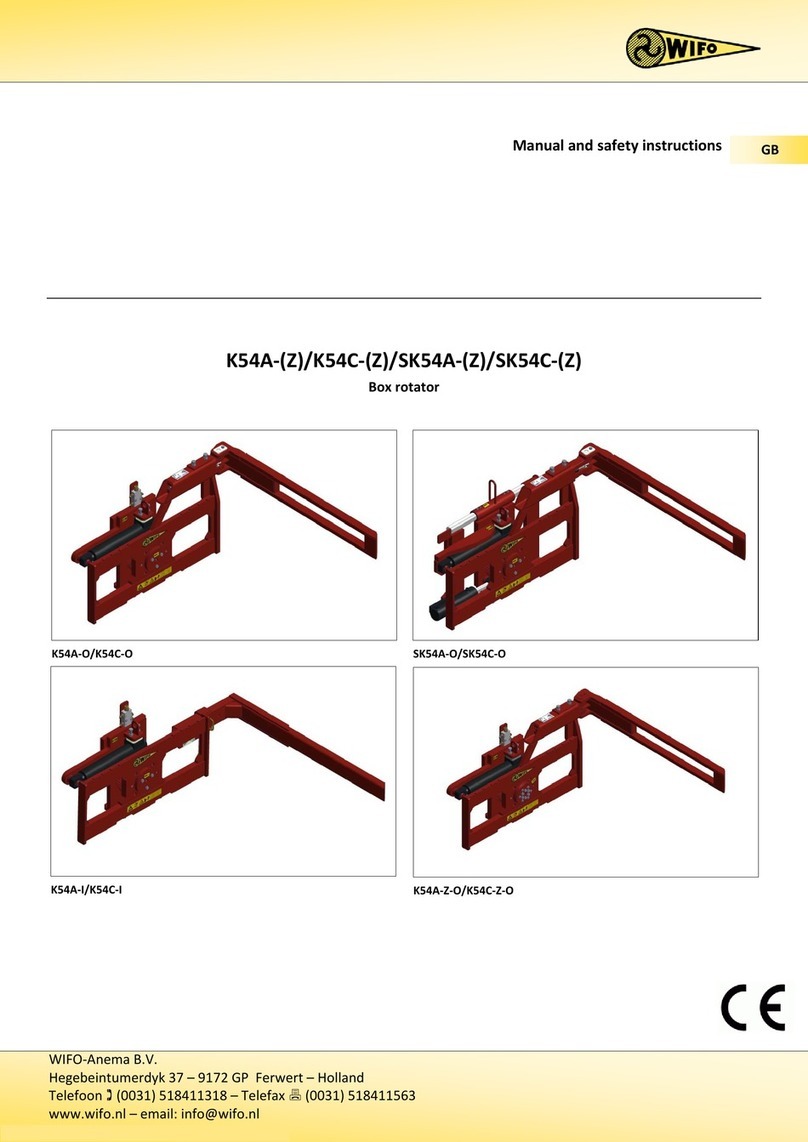
4
REPAIR
Only professionally trained and specifically authorized individuals are permitted to repair or modify any part of the stacker.
Any changes to installed switches and safety devices by the operator are strictly prohibited.
IMPORTANT: All spare parts from the manufacturer are inspected by Quality Assurance Authorities. To ensure the safety
and reliability of the stacker’s operation, only manufacturer approved spare parts may be used. Replaced parts, including
oils and fuels, must be disposed of in accordance with environmental protection regulations.
DANGER AREA
The “danger area” refers to the area where the stacker is working or lifting, causing a potentially dangerous situation for
persons or property in that the area.
Unauthorized persons must keep away from the danger area. In situations with potential danger to
others, the operator must give a warning notice. If the danger area isn’t vacated as requested, the operator must stop
using the stacker immediately.
WORKING IN HAZARDOUS ENVIRONMENTS
A stacker operating in an area where there is a hazard risk, or in any other high-risk area, should be specially equipped
for use in that environment.
This stacker is not equipped for hazardous situations.
SAFETY DEVICES AND WARNING SIGNS
Special attention should be given to safety devices, warning signs, and warning notices within these Operating
Instructions and on the stacker itself.
The stacker should always be driven with the forks at a height of 12 inches (300 mm) or less except when
placing or removing a load!
DRIVING IN PUBLIC AREAS
The stacker should not be driven on public roads.
DISTANCE BETWEEN VEHICLES
Bear in mind that the material handling vehicle in front of you may brake suddenly; therefore, keep a reasonable distance
when operating this stacker.
PASSENGERS
Passengers should not ride on the stacker unless it is indicated as permissible on the stacker.
CLEARANCE HEIGHT
The stacker cannot be used where the overhead clearance height is less than the height of the load or the mast.
USE IN ELEVATORS AND ON LOADING PLATFORMS
This stacker may only be driven into an elevator or loading platform if it has been authorized. The operator must confirm
that the elevator or loading platform has adequate load capacity to support the weight of the operator, stacker, load and
other contents of the elevator or loading platform before entering the elevator or loading platform. Cargo should be placed
properly inside the elevator to avoid touching the elevator walls. Passengers must enter the elevator only after proper
parking of the stacker, and should depart from the elevator before moving the stacker.
DRIVING LANES AND WORK AREAS
Only lanes and routes that are specially allocated for stacker traffic may be used. Unauthorized persons should stay away
from work areas. Loads must only be stored in places specially provided for this purpose.
OPERATOR CONDUCT
Driving speeds must be applicable for conditions. Low speed is mandatory when turning, navigating narrow aisles,
passing through doors, or driving with a blocked field of vision. The operator must be able to measure the braking distance
to the front of the stacker by sight and control his stacker at all times. Sudden braking (except in emergency), quick
U-turns, and passing other trucks in dangerous or blind spots is prohibited. Operator should stay within the operator’s area
during operation.
VISIBILITY
The operator must have clear visibility in the driving direction the stacker is traveling. If cargo obstructs your line of sight,
operating in reverse is recommended. If operating in reverse isn’t suitable, another person must walk ahead of the stacker
to give guidance and warning.
NEGOTIATING SLOPES AND INCLINES
















